
Detailed Info About F - 16 Versions From "Kofana"...
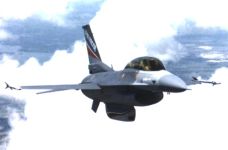
F - 16 Versions...
F-16 Block 1/5/10 - Reliability, maintainability, supportability, safety and minor cockpit improvements carried out on
F-16 A/B aircraft from 1978 (Block 1), 1979 (Block 5) and 1980 (Block 10). F-16 Block 15 - Introduced on F-16A/B aircraft
from 1981. Improvements included increased maximum T-O gross weight from 14,968 to 16,057 kg (33,000 to 35,400 lb),
increased maximum weight for 9 g manoeuvres from 10,206 to 11,113 kg (22,500 to 24,500 lb), installation of two inlet
hardpoint for sensor pods, strengthened store stations, increased horizontal tails, addition of provisions for six-station
advanced Beyond Visual Range (BVR) missiles, early provision for AIM-7 air-to-air missile, cockpit upgrades, internal ECM
upgrades and increased cooling capacity from 7 to 9 kW. Block 15 improvements introduced in 1988 include increased maximum
T-O gross weight to 17,010 kg (37,500 lb), Pratt & Whitney F100-PW-220 turbofan engines, wide-angle Head-Up-Display (HUD).
F-16 Block 20 - Introduced on F-16A/B aircraft from 1996. Improvements include increased maximum T-O weight to 17,010 kg
(37,500 lb), increased maximum weight for 9 g manoeuvres to 11,839 kg (26,100 lb), MLU cockpit, avionics and other
provisions. APG-66(V)3 radar, Pratt & Whitney F100-PW-220 engine, Block 50 aft fuselage and wing. AIM-7 Sparrow air-to-air
missile, AN/ALR-56M Radar Warning Receiver (RWR), AN/ALR-47 chaff/flare dispenser system. F-16 Block 25 - First F-16C/D
model. Intended for multirole applications and to allow for future growth of systems. Changes include F-16C/D cockpit with
multifunction displays, AN/APG-68 radar, provision for internal ECM systems, AGM-65D Maverick missile increased capacity
electrical system (60 kVA main generator, 10 kVA standby generator, 5 kVA emergency generator) and increased capacity
environmental control system (12 kW). A total of 244 Block 25 aircraft was built and delivered to the USAF between 1984
and 1986.
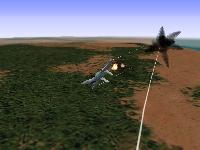
F-16 Block 30/32 - Common engine bay introduced at Block 30/32 (deliveries from July 1986) to allow fitting of either P&W
F100 PW-220 (Block 32) or GE F110-GE-100 (Block 30) Alternate Fighter Engine. Other changes include computer memory
expansion and seal-bonded fuselage fuel tanks. First USAF wing to use F-16C/Ds with F110 engines was 86th TFW at Ramstein
AB, Germany, from October 1986. Additions in 1987 included full Level IV multitarget compatibility with AMRAAM (as Block
30B), voice message unit. Shrike anti-radiation missiles (from August), crash survivable flight data recorder and modular
common inlet duct allowing full thrust from F110 at low airspeeds. Software upgraded for full Level IV multitarget
compatibility with AMRAAM early 1988. Industry-sponsored development of radar missile capability for several European
air forces resulted in firing of AIM-7F and AIM-7M missiles from F-16C in May 1980; capability introduced mid-1991;
missiles guided using pulse Doppler illumination while tracking targets in a high PRF mode of the AN/APG-68 radar. F-16
Block 40/42 - 265 Block 40 and 197 Block 42 aircraft have been delivered to the USAF. Various modifications/product
improvements have been incorporated to enhance the aircraft's capability as well as the user community's operational
requirements. Upgrades to the Block 40 aircraft include the AN/ALE-47 advance chaff/flare dispenser and the AN/ALR-56M
advanced radar warning receiver through continuing retrofit efforts. All Block 40/42 aircraft have been retrofitted with
several software upgrades to allow delivery of improved weapons such as CBU 87/89 sensor-fuzed weapons and the AIM-120
AMRAAM air-to-air missile. Block 40/42 aircraft have also been enhanced to accommodate LANTIRN, TGP and NVP product
enhancements. Future Close Air Supports (CAS) enhancements, beginning in mid-1998, for the Block 40 include NVG-compatible
exterior lighting and digital communication of targeting information via MD-1295/A Improved Data Modem (IDM). All Block
40/42 aircraft will be upgraded in the same time-frame with a digital terrain system, a horizontal situation display and
capabilities to deliver the CBU-97 weapon. First Block 40 F-16C/Ds issued late 1990 to 363rd FW (Shaw AFB, South Carolina);
first LANTIRN pods to 36th FS/51st FW at Osan, South Korea, in 1992. F-16 Block 50/52 - (deliveries began with F-16C
90-0801 in October 1991 for operational testing).
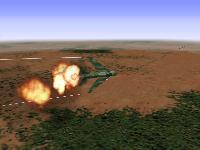
Upgrades include F110-GE-129 and F100-PW-229 Increased Performance Engines (IPE), AN/APG-68(V5) radar with advanced
programmable signal processor employing VHSIC technology, Have Quick IIA UHF radio, Have Sync VHF anti-jam radio and
AN/ALR-56M advanced RWR. Changes initiated at Block 50D/52D in 1993 include full integration of HARM/Shrike anti-radiation
missiles via Texas Instruments interface, upgraded programmable display generator with Digital Terrain System (DTS)
provisions and scope for digital map capability, ring laser INS (Honeywell H-423 selected 1990) and AN/ALE-47 advanced
chaff/flare dispenser. The USAF FY97 buy of the Block 50/52 F-16 includes incorporation of full colour, liquid crystal
diode technology, multifunction displays and a Modular Mission Computer (MMC). The MMC performs the functions of three
previous generation computers while requiring less power, space and cooling. FY97 F-16s are scheduled for delivery in
2000. Will carry the GBU-103/104/105 Wind-Corrected Munitions Dispenser, the AGM-154 JSOW, and the GBU-31/32 JDAM. F-16
Block 50D/52D - Block 50/52 Wild Weasel F-16CJ, ability to carry the AGM-88 HARM and the AN/ASQ-213 HTS. First Block
50D/52D (91-0360) delivered to USAF on 7 May 1993; optimised for defence suppression missions, having software for
horizontal situation display on existing two MFDs and provision for one of 100 HARM (AGM-88 High-Speed Anti-Radiation
Missile) targeting systems ordered by USAF. In addition to the USAF, the Block 50/52 has been purchased by South Korea,
Turkey, Greece and Singapore. International versions of the Block 50/52 include full integration of the AGM-84 Harpoon
anti-shipping missile, AIM-7 semi-active BVR missile, ASPJ internal ECM system, ASPIS internal ECM system, advanced
interrogating IFF system, high-frequency radio and customer unique systems. Deliveries of Block 50/52 began to 4th FS
of 388th FW at Hill AFB, Utah, from October 1992; others to 480th FS of 52nd FW at Spangdahlem, Germany, replacing Block
30 aircraft from (first delivery) 20 February 1993. Block 50D/52D aircraft initially to 309th FS (now 79th FS) of 363rd
(now 20th) FW at Shaw AFB, South Carolina; followed by 23rd FS/52nd FW at Spangdahlem, Germany, from 14 January 1994,
then squadrons at Mountain Home AFB, Idaho, and Misawa, Japan.
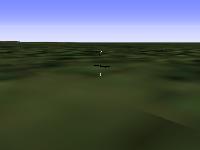
First Samsung-assembled F-16C Block 52D rolled out in South Korea on 7 November 1995. F-16 Block 60/62 - Projected
development, subject to customer demand. No firm configuration. Block 60 designation applied to export configuration
specifically designed for the United Arab Emirates, including conformal fuel tank, new cockpit displays, an internal
sensor suite, a new mission computer and an electronically scanned radar. F-16/79 - 1x F-16A with engine General
Electric J79-GE-119 (80,10 kN) (1st flight 29th Oct 1980), cheaper exort version F-16/101 - Derivative Fighter Engine
Program with engine from B1 General Electic F110 (1st flight 19th Dec 1980, ended May 1981). F-16 AFTI - Modified
preseries F-16A (75-0750) used for US Air Force Material Command Advanced Fighter Technology Integration (AFTI); first
flight was 10 July 1982; currently with Block 15 horizontal tail surfaces, Block 25 wing and Block 40 avionics. Trials
and programmes include automatic target designation and attack (1988), night navigation and map displays 1988 to 1989),
digital datalink and two- aircraft operations (1989), autonomous attack (1989 to 1991) LANTIRN pod and Falcon Night FLIR
trials (1992; tested automatic ground collision avoidance system and pilot-activated, low-level pilot disorientation
recovery system 1991); and 1996-97, offboard target hand-off and attack (1995); aircraft to be modified as testbed for
electric flight control actuators for JSF/Integrated Systems Technology (J/IST) (1998). Total 725 sorties June 1997.
F-16 GCAS - Ground Collision Avoidance System. The F-16 GCAS is a modified Block 25 F-16D to perform flight tests of an
automatic ground collision-avoidance system. This system has demonstrated that the use of advanced computing technology
can significantly reduce the number of accidents attributed to controlled flight into terrain (CFIT). F-16 (ADF) -
Modification of 279 (actually 272 because of preconversion attrition) Block 15 F-16A/Bs as USAF air defence fighters to
replace F-4s and F-106s with 11 Air National Guard squadrons; ordered October 1986.
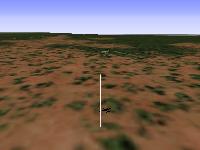
Modifications include upgrade of AN/APG-66 radar to improve small target detection and provide continuous-wave
illumination, provision of AMRAAM datalink, improved ECCM, AlliedSignal AN/ARC-200 HF/SSB radio (F-16A only),
Teledyne/E-Systems Mk XII advanced IFF, provision for Navstar GPS Group A, low-altitude warning, voice message unit,
night identification light (port forward fuselage of F-16A only), and ability to carry and guide two AIM-7 Sparrow
missiles. First successful guided launch of AIM-7 over Point Mugu range, California, February 1989; F-16(ADF)can carry
up to six AIM-120 AMRAAM or AIM-9 Sidewinder or combinations of all three missiles; retains internal M61 20 mm gun. GD
converted one prototype, then produced modification kits for installation by USAF Ogden Air Logistics Center, Utah, in
conjunction with upgrade to OCU avionics standard; first Ogden aircraft, F-16B 81-0817, completed October 1988.
Development completed at Edwards AFB during 1990; operational test and evaluation with 57th Fighter Weapons Wing
at Nellis AFB, Nevada; first F-16(ADF), 81-0801, delivered to 114th Fighter Training Squadron at Kingsley Field,
regon, 1 March 1989; 194th Fighter Interceptor Wing, California ANG, Fresno, achieved IOC in 1989, following receipt
of first aircraft (F-16B 82-1048) on 13 April 1989; first AIM-7 launch by ANG (159th FS) June 1991. Programme completed
early 1992; includes approximately 30 F-16Bs. F-16A - First production version for air-to-air and air-to-ground missions;
production for USAF completed March 1985, but still available for other customers; international sales continue; powered
since late 1988 (Block 15OCU) by P&W F100-PW-220 turbofan; Westinghouse AN/APG-66 range and angle track radar; first
flight of first aircraft (78-0001) 7 August 1978; entered service with 388th TFW at Hill AFB, Utah, 6 January 1979;
combat ready October 1980, when named Fighting Falcon; most now serving ANG and AFRES; power plants being upgraded to
F100-PW-220E, 1991 to 1996.
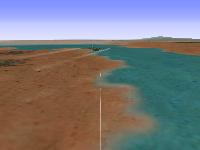
Also produced in Europe. Built in Blocks 01, 05, 10 and 15, of which Blocks 01 and 05 retrofitted to Block 10 standard
1982 to 1984; Blocks retrofitted to OCU standard starting late 1987. First GF-16A ground trainers relegated to use by
instructors at 82nd Training Wing, Sheppard AFB. F-16B - Standard tandem two-seat version of F-16A; fully operational
both cockpits; fuselage length unaltered; reduced fuel. F-16B-2 - Second prototype F-16B (75-0752) converted to private
venture testbed of close air support and night navigation and attack systems; equipment includes F-16C/D HUD, helmet
sight or GEC-Marconi Cat's Eyes NVGs, Falcon Eye head-steered FLIR or LANTIRN nav/attack pods, digital terrain system
(Terprom), and automatic target handoff system. Alternative nav/attack FLIR pods comprise GEC-Marconi Atlantic and
Martin Marietta Pathfinder (LANTIRN derivative). NVG-compatible cockpit lighting. Equipment testing continues on AFTI
testbed (which see). Aircraft no longer in service (placed in storage in 1996). F-16C/D - F-16/CCV - Control Configured
Vehicle. The first YF-16 (72-1567) was rebuilt in December 1975 to become the USAF Flight Dynamics Laboratory's Control
Configured Vehicle (CCV). CCV aircraft have independent or "decoupled" flight control surfaces, which make it possible
to maneuver in one plane without movement in another -- for example, turning without having to bank. The CCV YF-16 was
fitted with twin vertical canards added underneath the air intake, and flight controls were modified to permit use of
wing trailing edge flaperons acting in combination with the all moving stabilator. The fuel system was adapted, so that
by transferring fuel from one tank to another, the position of the aircraft center of gravity could be adjusted. F-16
FS-X/TFS-X (F-2), TRDI - F-16 Fighter Support Experimental, version of the F-16C, Inspired Japanese Fighter, 19 October
1987; Production of F-2 has been authorised.
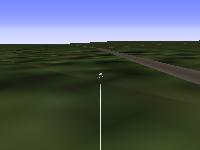
The FS-X is substantially larger than the F-16, resulting in a maximum take-off weight of 49,000lb, compared to the
F-16C's 42,000lb, although both are powered by the same 129kN (29,000lb)-thrust General Electric F110-129 turbofan engine.
Other FSX structural-design changes include radar-absorbent material (RAM) applied to the aircraft's nose, wing
leading-edges and engine inlet, the use of titanium in the tail and fuselage, the addition of a braking parachute and a
two-piece canopy reinforced against large bird strikes. F-16ES - Enhanced Strategic single-seat and two-seat, long-range
interdictor F-16 proposal; developed November 1993 in response to Israeli preference for F-15I Eagle; additional fuel
in one 1,136 litre (300 US gallon; 250 Imp gallon) centreline tank and two wing tanks, each 2,271 litre (600 US gallons;
500 Imp gallons), as well as two conformal tanks. Combat radius extended to in excess of 1,000 n miles (1,852 km; 1,151
miles). Not purchased, but conformal tanks to be flight tested as retrofit option for existing F-16s. Conformal tanks
could be without dorsal avionics compartment (that is independent), the F-16ES also features an internal forward-looking
infrared (FLIR) system, which basically replicates the capabilities of the LANTIRN navigation and targeting system without
the drag associated with external pods. A-16 for the CAS/BAI Missions - In the 1980s, the USAF started setting aside F-16s
for the planned A-16 modification, a dedicated close air support version of the F-16. In 1989, the designation Block 60
was reserved for the A-16. The A-16 Block 60 was to be equipped with a 30 mm cannon and provided with a strengthened wing
structure for anti-tank weapons such as 7.62 mm min pods. This project failed because the 30 mm gun would heat up and senge
the inner components of the left fuselage. F-16 LOAN - During late-1996, A USAF F-16C and its F100-PW-200 engine were
modified by a Lockheed Martin/Pratt & Whitney team. A LOAN (Low-Observable Asymmetric Nozzle) nozzle from the JSF (Joint
Strike Fighter) Program Office was fitted on the engine for ground testing in a two-day rapid prototype operation.
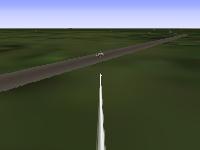
Developed under the Joint Strike Fighter BAA 94-2 program to evaluate advanced, affordable technologies applicable to the
JSF, the LOAN provides a significant reduction in radar cross section and infrared signature emissions from the engine,
as well as the potential for reduced maintenance costs. F-16 VISTA - In 1988, a contract was awarded to General Dynamics,
Fort Worth Division to develop the VISTA (Variable stability In-flight Simulator Test Aircraft). Calspan, a subcontractor
to GD, installed a center stick and integrated the computers needed to perform variable stability flights. Wright Labs
bought the aircraft in 1988 and from 1988 until 1992, the VISTA/F-16 program was being accomplished. There was no
connection between thrust vectoring and VISTA/F-16 at this time. F-16 MATV - The variable stability computers and the
centerstick were temporarily removed from the VISTA for the MATV program, which began flight tests in July, 1993. The
aircraft performed six functional flights at the Fort Worth facility in early July and was then ferried to Edwards AFB on
March 15th. The remainder of the rigorous flight tests occurred over there and thrust vectoring in flight was first used
on July 30. This Multi-Axis Thrust-Vectoring program compromised the investigation of high angle of attack flights above
20,000 feet. The variable stability computers were put back in place when the MATV program was concluded in March, 1994.
In January 1995 it returned to Forth Worth before being flown to Wright-Patterson AFB where it was delivered to the Air
Force. Over 130 flight hours have been accumulated with 95 missions. NF-16D - The heart of the VISTA is its Axisymmetric
Vectoring Exhaust Nozzle (AVENtm), which is attached to the exhaust of the aircraft's General Electric F110-GE-100 engine.
The AVEN tm achieves the required thrust vectoring within the divergent (supersonic flow) portion of the nozzle, which
prevents pressure fluctuations from being fed back into the engine where they could cause a compressor stall. The divergent
flaps are angled individually by means of a ring that is positioned by three additional hydraulic actuators located at
120-degree intervals, with power being supplied by an independent system. RF-16R Recce - All existing European recce F-16s
are block 15 A models and are operated by 306 squadron, Volkel AB, reconnaissance pods, including that for Tornado,
demonstrated in flight on F-16 fighters with minimum changes; RNLAF reconnaissance F-16A(R) operational since 1983 with
Orpheus pods, possibly using ATARS equipment.
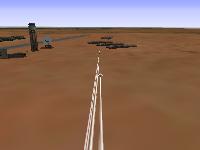
YF-16 - The F-16 no 1 prototype (72-1567), YF-16 no 2 (72-1568) F-16X - Projected development for 2010 service entry;
1.42 m (5 ft 0 in) fuselage stretch; modified F-22 delta wing with increased leading-edge sweep, but similar taper,
section, twist, camber, moving surfaces and structure; some 80 per cent additional internal fuel, obviating drop tanks
for most combat missions; conformal AIM-120 AMRAAM carriage. The F-16 would have been powered by the thrust-vectoring
version of the Pratt & Whitney F100-PW-229 engine that is now being used in NASA's F-15 Active program. It has a
modifiction of the conventional circular nozzle to achieve vectoring. F-16 SFW - In 1976, DARPA (Defense Advanced
Research Projects Agency) awarded funds to General Dynamics, Rockwell and Grumman under the Forward-Swept Wing Program.
Forward-swept wings offer low drag and improved low-speed handling characteristics, but they are extremely difficult to
manufacture using conventional techniques. The use of advanced composite materials makes the wing rigid enough to
withstand the forces introduced by aerodynamic stress, while simultaneously avoiding a weight penalty. F-16XL - Two F-16XL
prototypes, in flyable storage since 1985, leased from General Dynamics by NASA; first flight of single-seat No. 1, 9
March 1989; NASA modified this aircraft at Dryden with wing glove having laser-perforated skin to smooth air flow over
cranked arrow wing in supersonic flight, reducing drag and turbulence and saving fuel. Two-seat No. 2, with GE F110-GE-129
engine, similarly converted early 1992. A Block 40 digital flight control system has replaced the original analogue system
in F-16XL No. 1 (1997). F-16XL described in Jane's All the World's Aircraft 1985-86. F-16E - Single seat version of F-16XL
(1st flight 3rd Jul 1982) F-16F - Double seat version of F-16XL (1st flight 29th Oct 1982). F-16N - F-16Ns for the US Navy
(Top Gun Fighter Weapons School, VF-43, 45, 126). The F-16N is based on the standard F-16C/D Block 30 and is powered by the
General Electric F110-GE-100. They have no cannon or ASPJ and carry no missiles.
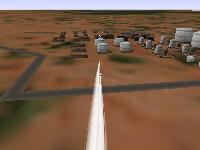
Their EW fit consists of an ALR-69 radar warning receiver (RWR) and an ALE-40 chaff/flare dispenser. The F-16Ns have the
standard Air Force tailhook and undercarriage, and are definitely NOT carrier capable. TF-16N - US Navy Supersonic
Adversary Aircraft (SAA) modified from F-16C/D Block 30; selected January 1985; deliveries of 26 aircraft started 1987
and completed 1988; features include AN/APG-66 instead of AN/APG-68 radar, F110-GE-100 engine, deletion of M61 gun,
AN/ALR-69 RWR, titanium in lower wing fittings instead of aluminium and cold working of lower wing skin holes to resist
greater frequency of high g; wingtips fitted only for AIM-9 practice missiles and ACMI AIS pods, but normal tanks and
stores on other stations. Four of 26 are two-seat TF-16N. F/TF-16Ns serve with "Top Gun" Fighter Weapons School (eight)
and with VF-126 (six) at NAS Miramar, California, VF-45 (six) at NAS Key West, Florida, and VF-43 (six detached from VF-45)
at NAS Oceana, Virginia. All F-16N were retired in 1994 for budgetary reasons. F-16 Mid-Life Update (MLU) - MSIP-F-16C/D -
Single/two-seat USAF Multinational Staged Improvement Program (MSIP) aircraft respectively, implemented February 1980.
MSIP expands growth capability to allow for ground attack and beyond-visual-range missiles, and all-weather, night and day
missions; Stage I applied to Block 15 F-16A/Bs delivered from November 1981 included wiring and structural changes to
accommodate new systems; Stage II applied to Block 25 F-16C/Ds from July 1984 includes core avionics, cockpit and airframe
changes. Stage III includes installation of systems as they became available, beginning 1987 and extendingup to Block
50/52, including selected retrofits back to Block 25. Changes include Westinghouse AN/APG-68 multimode radar with better
range, resolution, more operating modes and better ECCM than AN/APG-66; advanced cockpit with better interfaces and
up-front controls, GEC-Marconi wide-angle HUD, two multifunction displays, Fairchild mission data transfer equipment and
radar altimeter; expanded base of fin giving space for proposed later fitment of AN/ALQ-165 Airborne Self Protection
Jamming system (since cancelled); increased electrical power and cooling capacity; structural provision for increased
take-off weight and manoeuvring limits; and MIL-STD-1760 weapons interface for use of smart weapons such as AIM-120A
AMRAAM and AGM-65D IR Maverick. First AIM-120 operational launch (by any aircraft), 27 December 1992; F-16D (90-0778)
of 33rd FS/363rd FW destroyed Iraqi MiG-25.
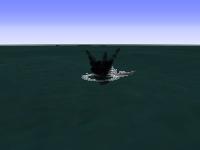
Operational Capabilities Upgrade (OCU)...
USAF/NATO co-operative programme to equip F-16A/B for next-generation BVR air-to-air and air-to-surface weapons; radar and
software updated, fire-control and store management computers improved, data transfer unit fitted, combined
radar-barometric altimeter fitted, and provision for AN/ALQ-131 jamming pods. Ring laser INS and upgrade from P&W
F100-PW-200 to F100-PW-220E planned for 1990s. FMS exports since 1988 to Block 15OCU standard with F-16C features
including wide-angle Head-Up Display (HUD), ring laser INS, F100-PW-220 power plant and AIM-9P-4 Sidewinder AAM
capability. F/A-16 Block 30 for the CAS/BAI Missions -Proposed modification of 300 Block 30/32 aircraft for Close
Air Support (CAS)/Battlefield Air Interdiction (BAI); head-steered FLIR, Pave Penny laser ranger and 30 mm cannon
pod. From 1995, 200 F-16Cs were to have received CAS/BAI modifications, including DTS, Navstar GPS and improved data
modem. Block 30/32 upgrade abandoned January 1992 in favour of CAS/BAI assignment of Block 40/42 aircraft, having
LANTIRN capability; these require more simple modification with ground datalink, laser spot-tracker, anti-jam radio,
missile approach warner, provision for pilot's night vision goggles and upgrades to LANTIRN pods. Plan for mission
version has since been dropped in favour of simpler upgrade to multirole Block 40 standard. F/A-16, F/A-16C for the
CAS/BAI Missions - The USAF was rather reluctant to let the idea of a dedicated CAS F-16 go, and planned to replace
its A-10s with F-16s fitted with a version of the Warthog's Avenger cannon. In November 1988, the 174th TFW of the
New York ANG began transitioning from the A-10A Thunderbolt II to the F-16A/B Block 10, becoming the first unit to
operate the F-16 in a close air support role. During Desert Storm, their 24 F-16A/B aircraft were equipped to carry
the General Electric GPU-5/A Pave Claw pod on the centerline station. The pod houses a 30mm GAU-13/A four-barrel
derivative of the seven-barrel GAU-8/A cannon used by the A-10A, and 353 rounds of ammunition. The aircraft received
the new designation F/A-16, and were the only F-16s ever to be equipped with this weapon, intended for use against a
variety of battlefield targets, including armor. F-16 CJ - Block 50D/52D modification for electronic fight F-16
CG/DG - Block 40/42 modification for ground strikes F-16 CB -Combat modification for ground strikes. F-16 AM - Agile
Falcon - In 1984, General Dynamics proposed the Agile Falcon as a counter to new Soviet fighters such as the MiG-29 and
the Su-27. It was designed to make use of some of the already-planned improvements to the Fighting Falcon known as
MSIP IV. In addition, it had a 25-percent larger wing and was powered by an improved General Electric F110-GE-129 or
Pratt & Whitney F100-PW-229 engine. Very little interest was attracted at that time. F-16 AT, Falcon 21 - The Falcon
21 or F-16AT was proposed in 1990 as a low-cost alternative to the ATF. It was to use the basic F-16XL design, along
with one of the proposed ATF engines. However, it was to use a trapezoidal delta wing rather than the F-16XL's
cranked-arrow wing. CK-1 - The CK-1 is an F-16D "Block 40" test bed fighter, built by Lockheed according to MANAT's
specifications. (MANAT is the IAF Flight Test Center). This version is packed with sensors, measuring control surface
movements and the airplane's rhythm of reaction to those movements. All measurements are delivered and analysed in
"real time", to a test engineer sitting at the back seat. Special sensors are built into the CK-1 along the wing's
root, measuring wing flatter and torsion forces. Other sensors could be installed in external pods or even at an
extension attached to the fighter's nose.












